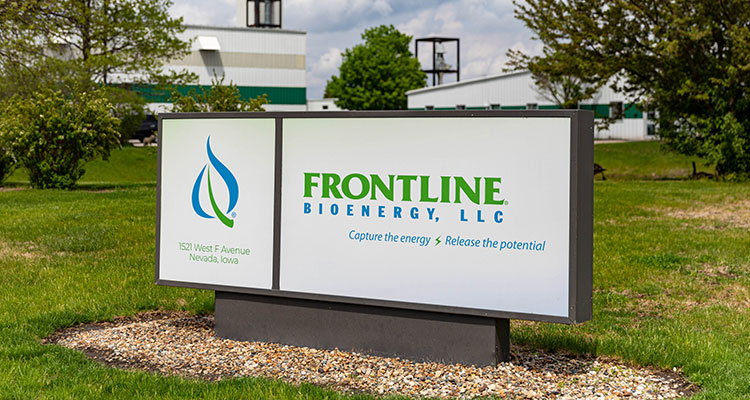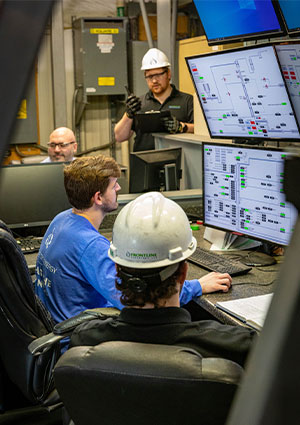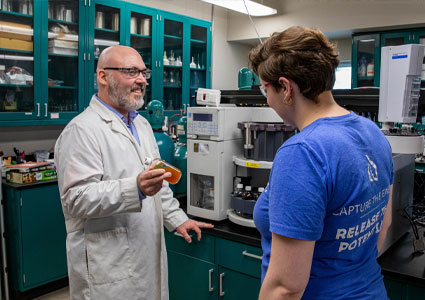
Frontline BioEnergy shares its innovation investment for leading energy renewal
Frontline BioEnergy (Frontline) was founded in 2005 with the aim of building a commercial-scale biomass gasification plant in Minnesota. The plant produced boiler fuel from wood chips and corn cobs for an ethanol manufacturer. Since its inception, the business has been building on its technology, focusing on reliability, efficiency, and the ability to integrate with downstream technologies like catalytic synthesis. “At our founding,” begins Frontline’s CTO, TJ Paskach, “we only knew how to do air-blown gasification that produced a low-Btu fuel gas. Now, we gasify with oxygen and steam, and we do it at a high pressure. We make a synthesis gas that is suitable for upgrading catalytically to products like methane and methanol. Back in 2018, we began to get into project development, with a goal to be a project owner and operator.”
 Energy potential
Energy potential
Since we last spoke with Frontline in 2022, the operation has been working on a front-end engineering design package for its current project, San Joaquin Renewables (SJR), for which TJ also serves as the President. Frontline founded SJR as a special project entity back in 2018. The facility will be built in the San Joaquin Valley of California to convert agricultural waste biomass into renewable natural gas. “We initially accepted investment from local growers and processors, as well as other local individuals, and even our own friends and family. Developing a project like this is a heavy lift and requires a significant amount of capital,” says TJ.
Back then the project was smaller, envisioned as producing only 500 tons a day. “We raised that initial capital, and did a lot of development contracting for feedstock, site, and offtake, and getting a line of sight on permitting, technology, schedule, and engineering. We continued development and fund raising until late 2021, when we made a deal with our two current equity investors, Silverpeak and Cresta Funds Management. They agreed to invest up to 165 million dollars in equity. That commitment included the remainder of the needed development capital.”
The area where the plant is located is rich in agriculture, and mostly focused on almonds, pistachios, walnuts, and grapes. These crops all have a woody biomass residue associated with their production, which serves as a great feedstock for the technology, and reinforces the plant’s excellent location.
TJ predicts that the plant will consume approximately 1400 dry-basis tons of biomass material. “Most of this biomass has no other viable outlet, so the project is providing a home for that material. The facility will make use of the potential energy in that material, converting it into renewable biofuel that can be used for transportation. Just providing that viable alternative will have an immediate positive impact on the air quality in the valley.
“Until very recently, open-burning of orchard removals was one of the only things you could do economically. The San Joaquin Valley Air Pollution Control District recently began providing subsidies of up to $600 per acre to help pay for what they call ‘whole orchard recycling,’ which amounts to grinding and reincorporating the trees into the soil. It covers part of the cost, but it’s not sustainable because it’s so expensive and wastes all of the energy in the biomass. Furthermore, it doesn’t kill any pathogens that might be present in the wood. Rather, it promotes mushroom growth in the orchards, and it would seem that the rotting wood has a significant methane emission profile as well. We’ve talked to the farmers and they agree it’s much better to remove the material. Our process recovers the energy there and produces biochar, which provides a way to return all the nutrients and real fixed carbon back to the soil instead of the potentially diseased wood.”
Flexible processes
What separates SJR from other projects is that the biochar produced represents permanently sequestered carbon that was recently atmospheric CO2. “Each leaf on the tree is a tiny solar panel and CO2 absorber. Photosynthesis in the leaf converts the atmospheric CO2 into wood. Our facility is able to turn that wood into biochar, renewable fuel, and some CO2 that can be used or sequestered underground. The other thing about the project is that it’s pretty large, so the impact can be big, in addition to producing a carbon-negative fuel.”
the tree is a tiny solar panel and CO2 absorber. Photosynthesis in the leaf converts the atmospheric CO2 into wood. Our facility is able to turn that wood into biochar, renewable fuel, and some CO2 that can be used or sequestered underground. The other thing about the project is that it’s pretty large, so the impact can be big, in addition to producing a carbon-negative fuel.”
The business is planning more projects similar to SJR in other locations both in the US, and internationally. “We’re bullish on hydrogen and methanol as well. Once you have a clean syngas, it’s very flexible as to what you decide to make. In addition to our core gasification technology, we’ve also commercialized a biomass pyrolysis technology. That tech can convert biomass into bio-oil and biochar. It’s more suitable to smaller-scale projects.”
Natural gas is an ideal biofuel as it can go into a pipeline system, which is similar to a power grid in many ways. “Once it’s in the pipeline, it can be bought by anyone connected to that pipeline. That means almost anyone can use our biofuel. The pipeline system for natural gas has long-established interchangeability standards, which means trading and usage is standardized. This opens up the market and our customers could be anyone from buildings and homeowners, to CNG fueling stations, or even other biofuel plants.”
Carbon-neutral future
In five years’ time, TJ expects to see SJR up and running, which will pave the way for many more projects just like it. “One common misconception that I also used to hold, is that the biomass resource is small, and that there isn’t enough biomass to produce our energy requirement. The fact is that the biomass resource is not small. A few years ago, the DOE reported we could produce one billion tons per year of biomass in the US,” TJ says. Tech like Frontline’s could convert this waste into something akin to 80 billion gasoline-gallon-equivalents of natural gas, which equates to half of the gasoline consumption in the US. This level of capability would help solidify the path to a carbon-neutral future, and encourage other operations in the energy industry to follow suit.